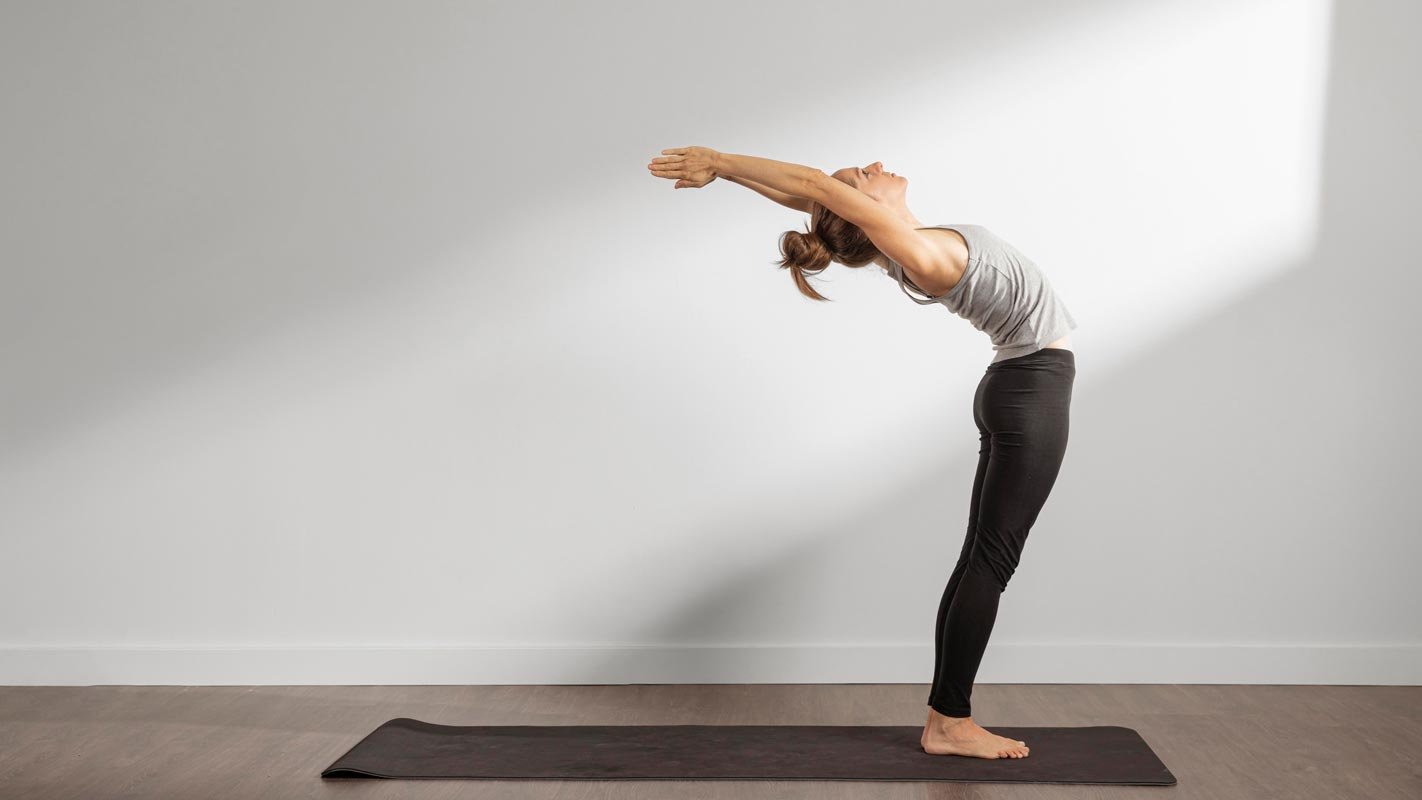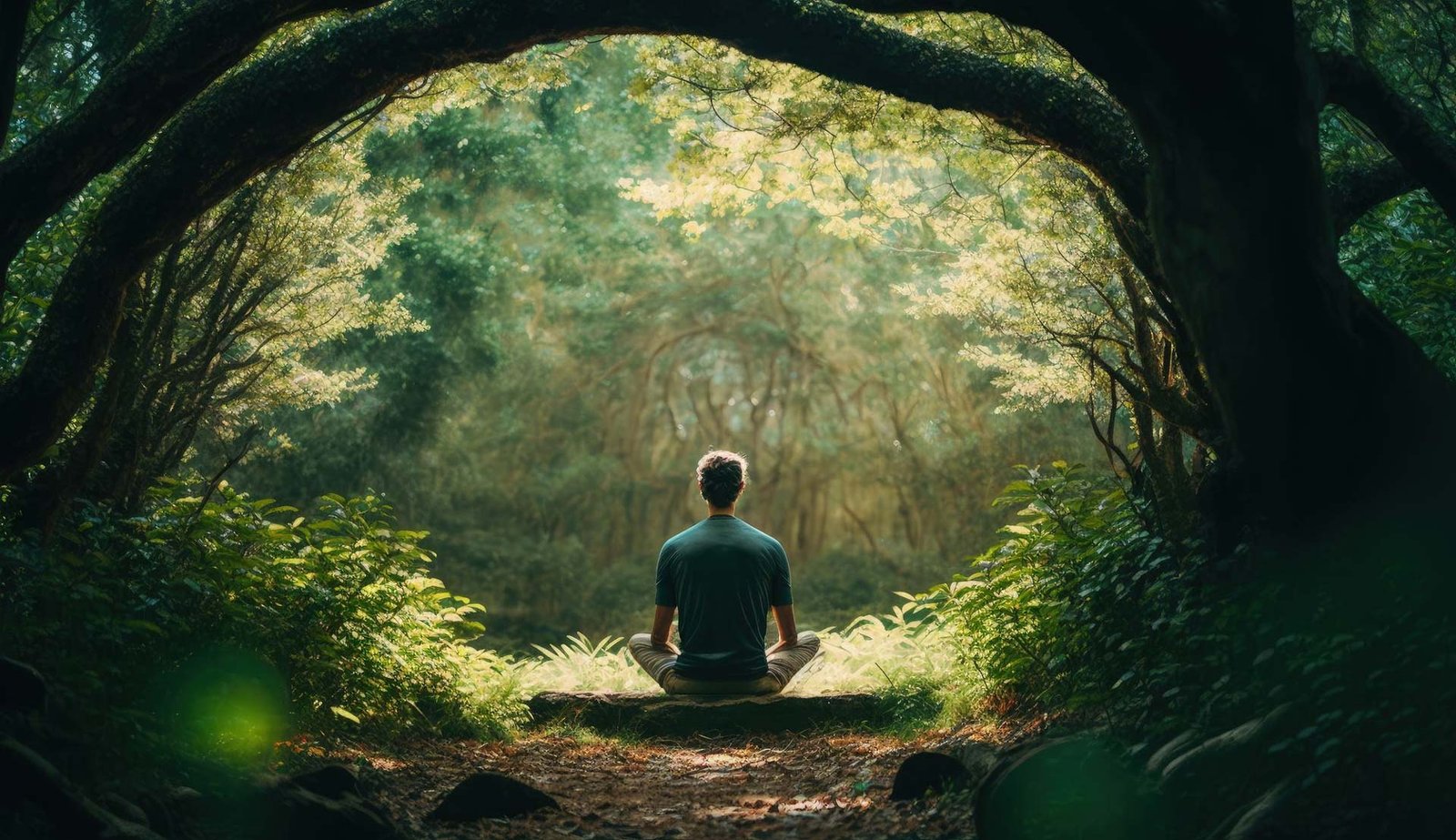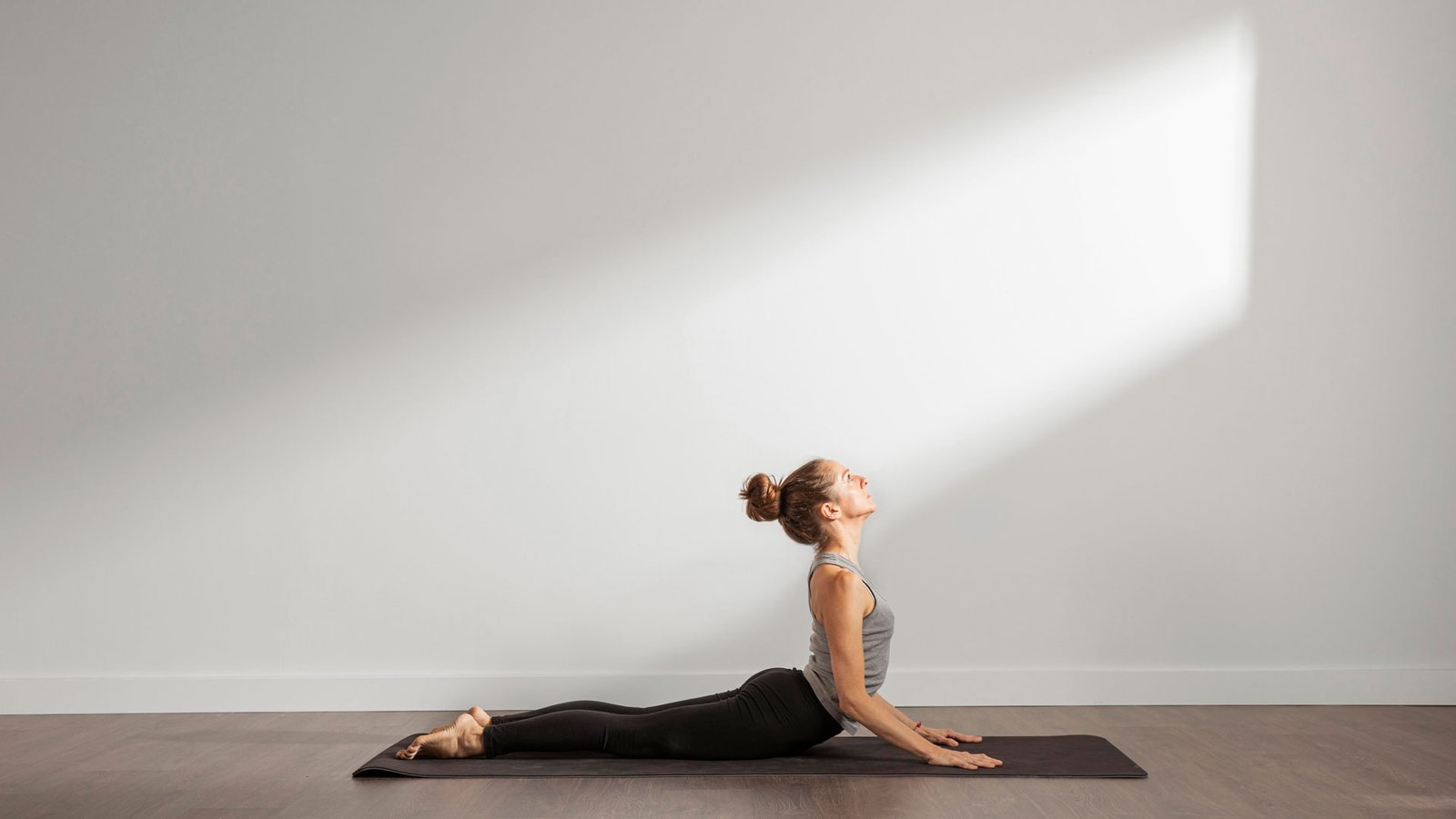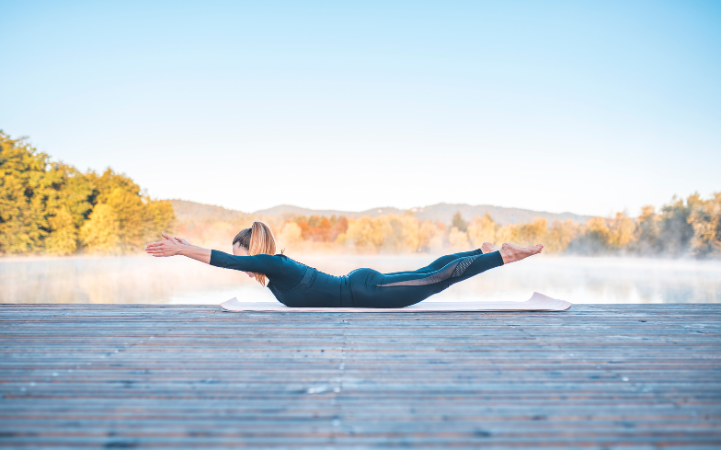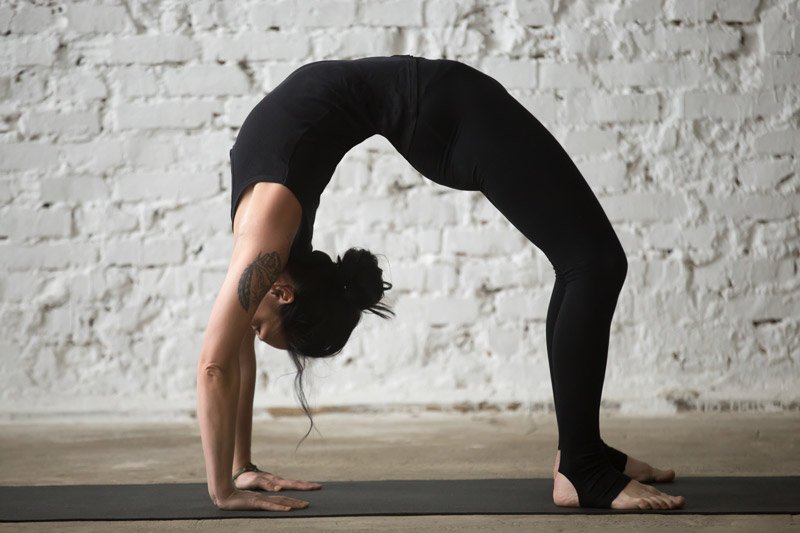Hasta Uttanasana, also known as the Raised Arms Pose, is a beginner-friendly yoga posture that provides a full-body stretch while boosting energy and flexibility. Derived from the Sanskrit words Hasta (hand), Uttana (intense stretch), and Asana (pose), it is often practiced as part of the Sun Salutation (Surya Namaskar) sequence. This pose helps awaken the body, improve posture, and enhance breathing, making it a valuable addition to any yoga routine.
Steps to Practice Hasta Uttanasana
- Starting Position: Begin in Tadasana (Mountain Pose), standing tall with your feet together and arms relaxed at your sides.
- Engage Your Core: Draw your belly inward slightly and lengthen your spine.
- Inhale and Raise Your Arms: On an inhale, stretch your arms upward alongside your ears, keeping your palms facing each other or joined together. Ensure your shoulders remain relaxed and away from your ears.
- Arch Slightly Backward: Lift your chest and gently arch your back, directing your gaze toward your fingertips. Avoid compressing the lower back; focus on elongating the spine.
- Maintain the Pose: Hold the position for 15–30 seconds, breathing deeply and steadily.
- Exhale to Release: On an exhale, bring your arms back down and return to Tadasana.
Benefits of Hasta Uttanasana
- Improves Posture: Encourages spinal alignment and counteracts the effects of slouching.
- Stretches the Body: Provides a deep stretch to the shoulders, chest, abdomen, and spine.
- Enhances Flexibility: Increases flexibility in the back, shoulders, and arms over time.
- Opens the Chest: Expands the ribcage, improving lung capacity and breathing efficiency.
- Strengthens Core Muscles: Engages the abdominal muscles, providing gentle core activation.
- Boosts Circulation: Improves blood flow to the brain and upper body, energizing the mind and body.
- Reduces Stress: The upward stretch combined with focused breathing calms the mind and relieves tension.
Tips for Practicing Hasta Uttanasana
- Focus on Alignment: Keep your spine long and avoid over-arching the lower back.
- Engage the Whole Body: Ground your feet firmly into the mat while reaching upward, creating a sense of elongation throughout the body.
- Modify for Comfort: If you have tight shoulders, keep your arms slightly apart instead of bringing your palms together.
- Incorporate Breath: Synchronize your movement with your breath, using inhales to lift and stretch.
- Warm Up First: Practice gentle stretches or Sun Salutations to prepare your body for the pose.
Cautions and Contraindications
- Back Pain or Injuries: Avoid excessive arching of the back, and consult a yoga instructor if you have pre-existing spinal issues.
- Shoulder or Neck Problems: Keep the arms parallel or slightly apart if lifting them overhead causes discomfort.
- Dizziness: Rise slowly from the pose to prevent lightheadedness, especially if you have low blood pressure.
- Pregnancy: Pregnant practitioners should avoid deep backbends and practice with modifications to ensure safety and comfort.
- Beginner Care: Avoid forcing the stretch if your body feels tight; flexibility will improve with regular practice.
Hasta Uttanasana is a rejuvenating yoga pose that promotes physical and mental well-being through its gentle yet invigorating stretch. It’s ideal for beginners and experienced practitioners alike, helping to improve flexibility, posture, and energy levels. Incorporating Hasta Uttanasana into your daily practice can serve as a powerful tool for enhancing body awareness and releasing tension. With mindful practice and proper alignment, this pose can unlock its full range of benefits, leaving you feeling refreshed and balanced.


